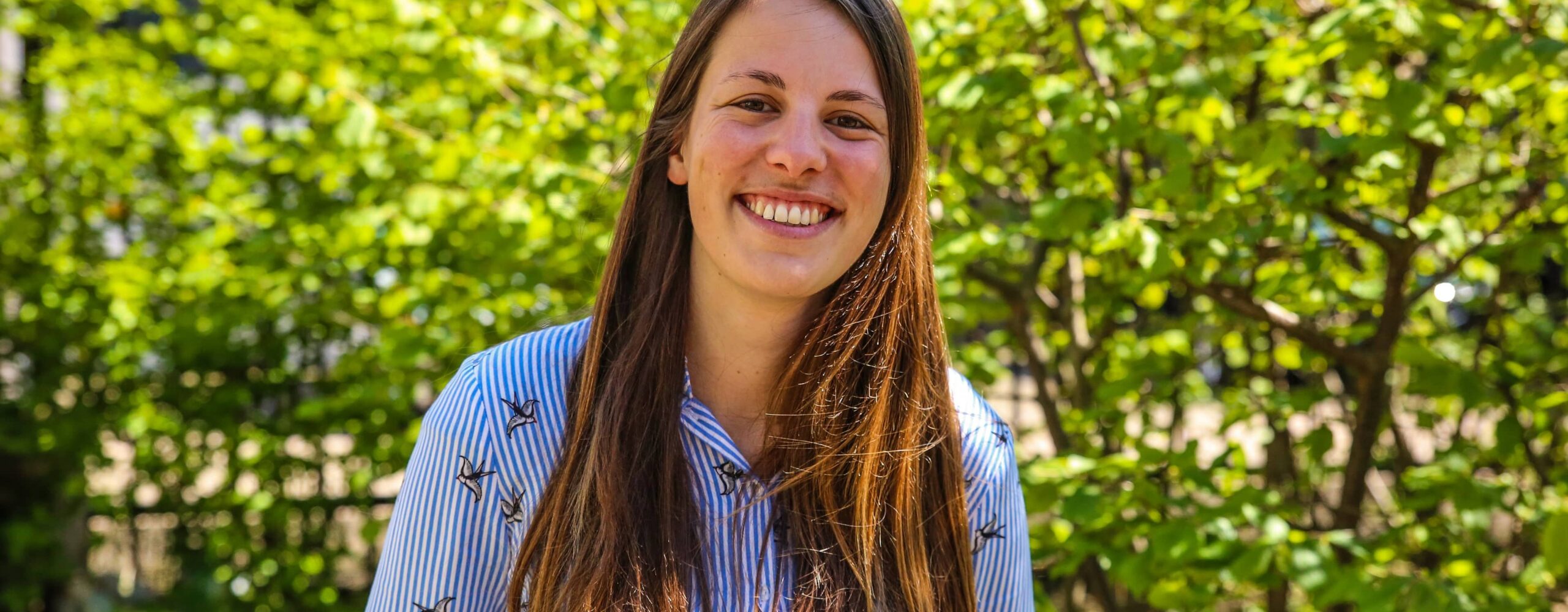From Welkom Hier to Samen Hier: a logical continuation
By Liselot van Zantvoort, Programme Officer Migration & Human Rights
In 2015, there was something in the news every day about the arrival of refugees in the Netherlands. News about fortune seekers, ‘anti-asylum seeker centers’ actions and polarising texts often found their resonance online and in the media. At Justice and Peace, we missed a nuanced story: a story in which concerns about the arrival of refugees were heard, but in which people with solutions or with a refugee background also spoke. Although negative news predominated in the media, we heard the same negative opinions much less in conversations with Dutch people. We were asked much more often: I want to do something, but what can I mean for refugees who are in the Netherlands? We wanted to make this sound of solidarity louder.
That is why we organised a festival together with three other organisations from The Hague in February 2016, with the name ‘Welkom Hier‘ (Welcome Here). The festivals had something magical. We wanted to welcome refugees to The Hague and bring them into contact with the local The Hague people, but we also wanted to connect all organisations and citizens’ initiatives (which then sprouted like mushrooms). And it worked! More than 30 organisations were present and more than 750 visitors came to Theater aan het Spui to share their experiences with each other. In this way we showed together that there is solidarity with refugees in The Hague. That really felt like a relief between the negative news of the time.
During the festival in The Hague, a Delft organisation approached us to also organise a Welkom Hier festival in Delft, and that’s how the ball started rolling. Now, three and a half years later, we have held 19 festivals in 13 different cities and villages in the Netherlands. Every Welkom Hier festival brought together a diversity of people, and for refugees and status holders it was an easily accessible way to get in touch with Dutch people and local organisations.
In March 2019, we organised the last Welkom Hier festival, again in The Hague, in the form of a living room festival: Newcomers opened their house to give a message of welcome to Dutch people themselves. The festivals now feel less urgent than in 2016. I remember that a young Syrian man came to me during one of the festivals in Haarlem and told me that he felt part of the city for the first time, with people from all kinds of backgrounds together. During the festival he had started a conversation with someone in Dutch outside of his language lessons. I was happy for him, but at the same time I became a bit worried. Although the Welcome Here festivals brought a wide diversity of people together, it seemed that outside of these kinds of events there was little contact between Dutch people and newcomers.
A sequel to Welkom Hier
Although there was much informal and accessible contact between Dutch people and newcomers at the Welkom Hier festivals, it remained one-day events. That is a shame, because we noticed during the festivals that many Dutch people want to get in touch with newcomers and that newcomers need contact with Dutch people, but that they encounter each other so little. This made us think about building more sustainable contacts. When we met the founders of the Canadian ‘ Together Project’ (an initiative where five Canadians are linked to a newcomer), we were inspired for a concrete follow-up to Welkom Hier: Samen Hier (Together Here).
We launched Welkom Hier at the beginning of 2016 out of the urgency of welcoming newcomers, but the demand has changed in recent years from welcoming newcomers to providing a community that includes newcomers. This is because integration does not take place at the hands of the municipality, during Dutch language lessons or while visiting a Welkom Hier festival. As far as I am concerned, integration is about feeling yourself part of a community. As a newcomer you of course have to make an effort yourself, but not alone. It also requires openness from a receiving community. With Samen Hier, we therefore link groups of friends, or a group of colleagues, neighbours, family members or other acquaintances for (at least) one year to a newcomer or newcomer family. Their little stories about baking gingerbread together, walking by the sea and going to the cinema are precisely the stories that we believe contribute to that nuanced story about refugees, integration and an inclusive society. I hope that Samen Hier can connect as many people as possible with each other, but in the end I naturally hope that Samen Hier will one day no longer be necessary as ‘matchmakers’ between the Dutch groups of friends and newcomers.

